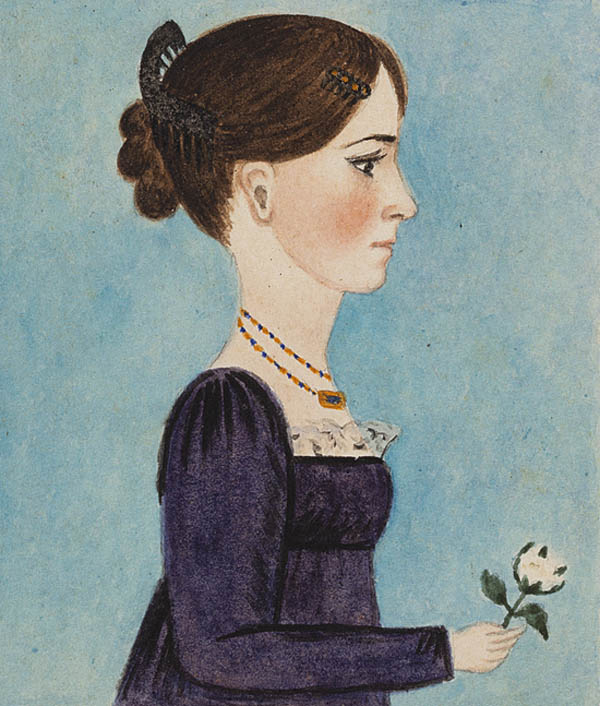The Brock Family Artist: A New Discovery In Virginia Folk Portraiture
Group Of Portraits To Be Sold At Jeff Evans Americana Auction
The profile portrait, as an art form that touched all socioeconomic levels in the United States, was at its peak of popularity during the first half of the 19th century. Given the deeply-rooted cultural appetite for all things Classical during the formative years of the American republic, it is no surprise that the profile portrait (a common Classical device employed in coinage, architectural ornament, and other decorative arts in Ancient times) became an important part of the national aesthetic during the Federal period. Additionally, the invention of mechanical devices, such as the physiognotrace, that facilitated production and enhanced verisimilitude, as well as widespread interest in the pseudo-science of physiognomy, played a vital role in the rise of profile art in early America. From the depiction of Liberty on silver coinage, to the portrait engravings of well-known individuals by St. Memin, to the significant number of silhouettes produced during this period, it is clear that the profile as a distinct genre had permeated the popular imagination to a substantial degree in Federal America. It is no surprise then, that many of the patrons of backcountry portraiture from the early 19th century elected to have a profile likeness taken of themselves, rather than a traditional frontal view. Indeed, the demand for profile portraiture amongst the middle class was great enough in the early decades of the 19th century to spur a new generation of itinerant folk artists to travel the countryside in pursuit of commissions (think of William Weaver, Francis Cezeron, Jasper Miles, Silon Henkel, and Rufus Porter, to name just a few). With smaller, lightweight materials to transport, mechanical devices to aid in the work, and a whole new class of customers eager for profile likenesses, these new artists thrived in Americas rural areas.
Joseph Brock (b. 1771), the patriarch depicted in the Brock Family portraits, was just such an eager customer. Around 1810, Brock commissioned this unknown profile artist to take likenesses of himself, his wife, and his growing family. Census records for the year indicate that the Brock household in Madison County, Va., was a busy one, with over 28 people recorded, 12 of them enslaved. By 1820, those numbers had grown to 34 individuals recorded in the Brock household, 18 of them enslaved. Clearly, Joseph Brock was established, and he choose to mark this moment in the growth of his family through profile portraiture. His oldest son, Anselm Brock (b. 1797), would remain in Madison for some time, where he is recorded in the 1850 census as a tavern keeper with $2,400 worth of real estate. It appears that Anselm may have moved in the late 1850s to Richmond, Va., where he is documented in an 1858 carte-de-visite photograph from a Richmond photography studio and later buried in the citys famous Hollywood cemetery. With the destruction of Richmond during the Civil War, the Brock Family migrated south, settling in Alabama and Georgia, where the portraits have descended to the present owner.
The appearance of the present group of Brock Family watercolor profile portraits on the open market represents a rare opportunity to acquire an intact, fresh-to-the-market group of Southern backcountry family portraiture from the Federal period by an as-yet unidentified individual hand.
To learn more, visit www.jeffreysevans.com.









